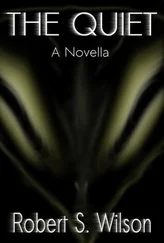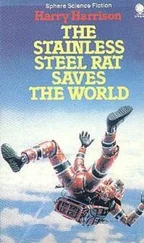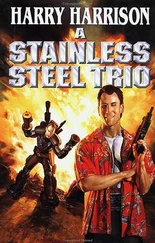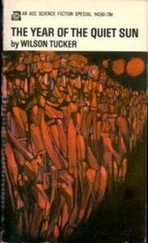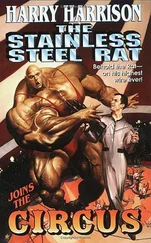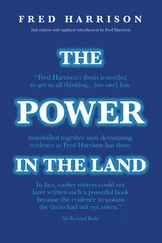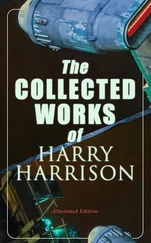It would not have been easy to explain to an outsider what we were trying to do, even if the project had been taken off the secret list. Joanne thought I was treating her badly because I was so involved in the work and yet unable to tell her anything about it. But I was sure we were on the verge of a breakthrough in one of the basic problems of biomolecular genetic research and we were going into areas which strictly speaking were marginally beyond what we were supposed to be doing and for me that was very exciting and challenging and all-absorbing. I was the youngest member of the team, in my late twenties, and it was a chance I might not get again.
Perrin was investigating dormant genes. It had been discovered that within all species of living creatures there were some individual members—very rare, about one in a million for human beings—whose genes contained an inactive, apparently useless ‘pair’, chromosomes without any discernible function. Scientists had been trying to activate these. Atkinson had been using fruit flies, Drosophila, because of their simple genetic structure and rapid rate of reproduction. Perrin had extended the experiments to include mice, rats, dogs and rhesus monkeys. We were using radioactivity plus low-frequency sound waves. The problem was to energise the dormant genes without destroying the others at the same time or producing lethal factors which would cause the organism to self-destruct. Nature had been very careful here. A whole complex of natural prohibitions existed which ensured that mutants and abnormalities failed to reproduce at a basic cellular level, or aborted, or were suicidal, or fell mysteriously into recessive or lethal phases, or, if they survived at all, turned out to be sterile. And usually the radiation would produce abnormalities or sterility.
Perrin wanted to use the sound waves to induce a ‘resonating effect’ on the ribonucleic chains which would confuse the ‘alarm systems’ and at the same time protect the basic proteins from the bad effects of the radioactivity being used to activate the dormant genes.
All this research had originally sprung from simple experiments in stockbreeding, always well funded in New Zealand. Officially we were hoping to make farm animals genetically more efficient and productive. We had been given rather more remote and secret facilities when we started using radioactive isotopes. The government didn’t want us pestered by some unholy alliance of anti-nuclear protestors and animal lovers. At least that was the official, or rather, unofficial, reason for all the security. But of course secrecy had bred secrecy, and it had become difficult for a research assistant such as myself to find out, to know exactly, the full range of activities even in our own department. We were investigating the dormant genes ‘because they were there’. It was pure research. Nobody knew why dormant genes existed. We were going to shake them awake from the thousand million years in which they’d mysteriously coasted through evolution as an unworking elite. It would be an achievement beyond Rutherford’s dissection of the structure of the atom, which had been started in an even more rudimentary way in a cellar in Christchurch.
Naturally we did not trumpet our project, not even to our funding agencies. There was a general feeling that they would stop us. As Atkinson had remarked with his usual dryness, we would be poor scientists if we could confuse the incredibly subtle and complex alarm systems inside proteins, yet not be able to do the same for the alarm systems of a few thick-headed politicians and bureaucrats.
I sat in the empty laboratory staring at the DNA spiral. It was a tangled helter-skelter of different coloured plastic marbles curving round in chains of partners, held in midair by steel rods on a frame; a frozen dance, infinitely elegant. I remembered Perrin standing by it one day, when I’d said, ‘What do you think will happen?’—meaning, when we resonate the cells at the correct frequency to wake the dormant genes. He had peered at me, resettling his steel-rimmed spectacles on his nose with his forefinger.
‘Evolution,’ he said; ‘the next phase. A quantum leap. We have some idea. The timing can’t be accidental.’
‘Timing?’
‘If there’s intelligent life out there’—gesturing not at Auckland but up at the universe—‘it probably follows the same pattern as ours. Nuclear physicists develop the ability to destroy the planet. We risk being destroyed because our moral and ethical development has lagged behind too far. We’re moral cretins playing with hydrogen bombs. But the odds are, that every civilisation which can unravel the atomic nucleus will also unravel the protein chains of evolution at the same time .’ He paused, and put his hand on the DNA model. ‘Nuclear fallout leads to radioactive mutations. The clue for waking up the dormant genes. It’s a coding system. They’re there to save us. From ourselves.’
He knocked the DNA structure with his knuckles, gently, making it vibrate.
‘But we can’t be sure,’ I said. I could hardly grasp the full implications of what he’d been saying. Perhaps he was trying out an elaborate patronising joke on me, I thought. They sometimes did. No, he was serious. I had seen him reach out his hand and knock on the next billion years; the chains of protoplasm trembled. I had been thinking of unravelling a secret from the past, as Watson and Crick had done with DNA. Ideas about the future had not occupied much space in my mind. A quantum leap. He was supremely assured. He looked at me, his glasses reflecting the gleam of the spotlight.
‘What else could it be?’ he said.
At that time I was sufficiently surprised by the fact that he had floated these speculations to me, to be able to ignore the feeling that he was still concealing the greater part of his ‘mystery’; and to disregard any doubts I might have had about his sanity. Objective standards of sanity didn’t exist. Even if they did, it would have been pointless to judge the people who worked at the unit by them.
Then later, I began to see the flaws in his argument. And I started to worry.
The quantum leap would be a leap in the dark unless it could be controlled. If the genetic developments could be controlled absolutely then they would be absolutely corruptible and corruptive. Secondly, Nature might have prepared not a mechanism for saving us, like a fire alarm behind thick glass, but a final defence mechanism for preserving the rest of creation against us. Perrin might have seen all the right clues but constructed the wrong conclusion from them. The evolutionary charts showed our ape-brained predecessors loping down the dead ends of genetic failure into extinction, and Man striding serenely along the broad path of development ad infinitum . We might have been mistaken. Worse, we might have fallen deliberately over a tripwire set a billion years ago to catch us if we became too clever for the good of the universe. Finally, it was useless to pretend that we were a vastly superior group of people in this unit, immune to the general retardation or to human frailties. That was the crunch.
It had been another of Perrin’s mottoes that ‘you never see the obvious’. I stood and switched off the spotlight on the DNA model. There was no sense in wasting power. The image of his hand reaching out to the structure remained in my mind. What he had failed to see had been very obvious and yet I hadn’t worked my way round to it easily because it involved the kind of admission which broke down secure barriers inside oneself; it had been one of the factors which had led to the eventual nervous crisis, or whatever it was, culminating in my having to take extended leave from the unit.
It consisted of the simple realisation that if moral cretins were playing with hydrogen bombs, then moral cretins might also be playing with DNA molecules.
Читать дальше

![Nick Cracknell - The Quiet Apocalypse [= Island Zero]](/books/28041/nick-cracknell-the-quiet-apocalypse-island-zero-thumb.webp)

